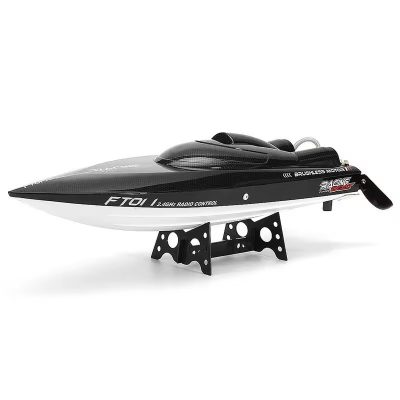Introduction
RC boats rely on a combination of mechanical and electronic components to deliver impressive performance on the water. Understanding these electronic systems is essential for optimizing your boat’s performance and troubleshooting issues. In this beginner’s guide, we’ll explore the key electronic components of RC boats and how they work together to provide a thrilling experience.
1. The Motor
The motor is the powerhouse of your RC boat. There are two main types of motors: brushed and brushless. Brushed motors are simpler and more affordable, making them ideal for beginners. Brushless motors offer higher efficiency, greater power, and longer lifespan, making them popular among enthusiasts seeking top performance.
2. Electronic Speed Controller (ESC)
The ESC controls the speed and direction of the motor. It receives signals from the receiver and adjusts the motor’s power output accordingly. Modern ESCs offer features like programmable settings, braking, and reverse functions. Understanding how to configure and calibrate your ESC can significantly enhance your RC boat’s performance.
3. Battery and Charger
RC boats typically use rechargeable batteries, with Lithium Polymer (LiPo) batteries being the most common choice. LiPo batteries offer high energy density and lightweight design, providing longer run times and more power. Using a quality charger designed for LiPo batteries is crucial for safety and maintaining battery health. Always follow the manufacturer’s guidelines for charging and storage.
4. Receiver and Transmitter
The receiver and transmitter facilitate communication between the driver and the RC boat. The transmitter (remote control) sends signals to the receiver, which then relays commands to the ESC and other components. Modern 2.4GHz radio systems offer reliable, interference-free communication and a longer range. Understanding how to bind and calibrate your transmitter and receiver ensures smooth and responsive control.
5. Servo
The servo is an electromechanical device that controls the steering mechanism of your RC boat. It receives signals from the receiver and adjusts the rudder angle accordingly. High-torque servos provide better precision and faster response times, improving overall handling and control. Regularly check and maintain your servo to ensure optimal performance.
6. Wiring and Connectors
The wiring and connectors link all the electronic components of your RC boat. Use high-quality wires and connectors to ensure reliable power delivery and minimize resistance. Properly routing and securing the wiring can prevent damage and interference. Regularly inspect and maintain the wiring to avoid issues.
Conclusion
Understanding the electronic components of your RC boat is crucial for optimizing performance and troubleshooting problems. By familiarizing yourself with the motor, ESC, battery, receiver, transmitter, servo, and wiring, you can better manage and enhance your RC boat’s capabilities. With this knowledge, you’ll be well-equipped to enjoy a more reliable and exhilarating RC boating experience.








